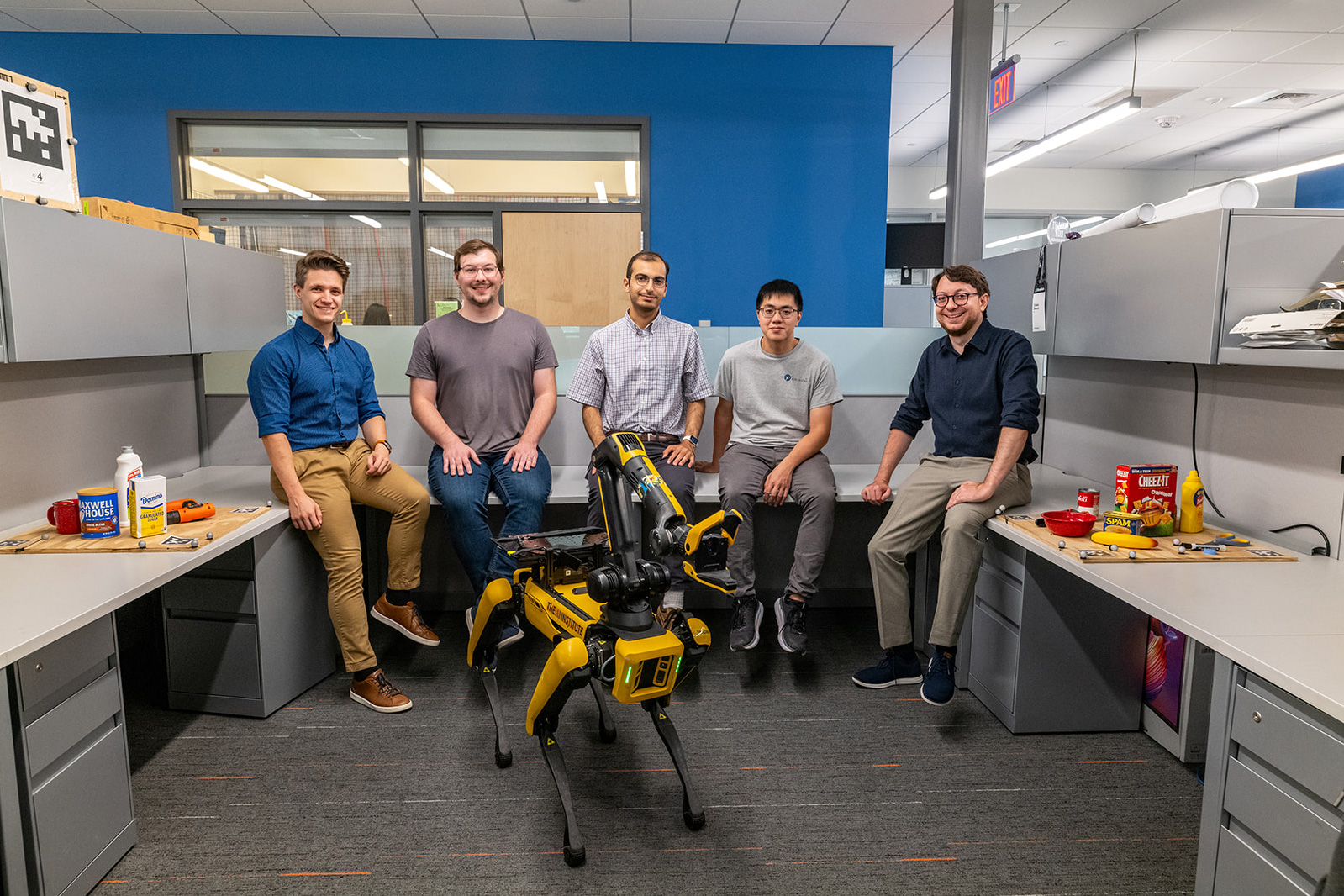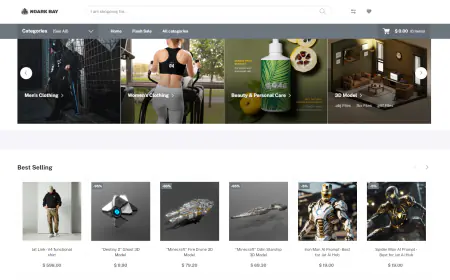Syngenta develops a generative AI assistant to support sales representatives using Amazon Bedrock Agents
In this post, we explore how Syngenta collaborated with AWS to develop Cropwise AI, a generative AI assistant powered by Amazon Bedrock Agents that helps sales representatives make better seed product recommendations to farmers across North America. The solution transforms the seed selection process by simplifying complex data into natural conversations, providing quick access to detailed seed product information, and enabling personalized recommendations at scale through a mobile app interface.

This post was written with Zach Marston and Serg Masis from Syngenta.
Syngenta and AWS collaborated to develop Cropwise AI, an innovative solution powered by Amazon Bedrock Agents, to accelerate their sales reps’ ability to place Syngenta seed products with growers across North America. Cropwise AI harnesses the power of generative AI using AWS to enhance Syngenta’s seed selection tools and streamline the decision-making process for farmers and sales representatives. This conversational agent offers a new intuitive way to access the extensive quantity of seed product information to enable seed recommendations, providing farmers and sales representatives with an additional tool to quickly retrieve relevant seed information, complementing their expertise and supporting collaborative, informed decision-making.
Generative AI is reshaping businesses and unlocking new opportunities across various industries. As a global leader in agriculture, Syngenta has led the charge in using data science and machine learning (ML) to elevate customer experiences with an unwavering commitment to innovation. Building on years of experience in deploying ML and computer vision to address complex challenges, Syngenta introduced applications like NemaDigital, Moth Counter, and Productivity Zones. Now, Syngenta is advancing further by using large language models (LLMs) and Amazon Bedrock Agents to implement Cropwise AI on AWS, marking a new era in agricultural technology.
In this post, we discuss Syngenta’s journey in developing Cropwise AI.
The business challenge
Syngenta offers a diverse portfolio of seed products in North America, reflecting the company’s commitment to growers meeting them at the field. The seed selection process involves careful consideration of multiple factors, including seed product characteristics, specific growing environments, and the unique practices and goals of each farmer. Many farmers struggle to navigate the complex decision-making process and might not always choose the most suitable seeds for their specific conditions, potentially impacting crop yields and profitability.
Recognizing an opportunity to improve this selection process, Syngenta collaborated with the AWS Generative AI Innovation Center, an AWS program that fosters collaboration between customers and AWS experts. This collaboration yielded Cropwise AI, which improves the efficiency of sales rep’s interactions with customers to suggest Syngenta seed products.
Cropwise AI
Cropwise AI transforms the seed selection process in several powerful ways. It simplifies complex charts and tables into a natural, conversational experience, providing users with quick, on-demand access to detailed seed product information on a mobile device. The tool also streamlines data navigation, allowing users to efficiently explore and compare Syngenta’s extensive seed catalogue. Additionally, Cropwise AI enables personalized recommendations at scale, tailoring seed choices to align with local conditions and specific farm needs, creating a more precise and accessible selection process.
Cropwise AI enhances the seed selection process by acting as a valuable companion to the expertise of sales representatives and the decision-making process of farmers. For sales representatives, it empowers them with deeper insights, enabling more informed recommendations. For farmers, it offers an accessible resource for exploring and comparing seed options. The following example shows the Cropwise AI mobile app in GHX 2.0 describing a common seed product (left) and the transcribed conversation (right).
 |
Cropwise AI: Hello, Jack! What can I do for you? |
| Me: Tell me about the G11V76 hybrid of golden harvest | |
| Cropwise AI: G11V76 is a corn hybrid developed by Golden Harvest. Let’s delve into its characteristics:
|
The collaboration between Syngenta and AWS showcases the transformative power of LLMs and AI agents. With the capability to embed human expertise and communicate in natural language, generative AI amplifies human abilities, allowing organizations to utilize knowledge at scale. This project is just one example of how Syngenta is using advaned AWS AI services to drive innovation in agriculture.
In the following sections, we provide a detailed overview of the Cropwise AI solution by diving deep into the underlying workflows. We explore how you can use Amazon Bedrock Agents with generative AI and cutting-edge AWS technologies, which offer a transformative approach to supporting sales reps across this industry (and beyond).
Solution overview
Cropwise AI is built on an AWS architecture designed to address these challenges through scalability, maintainability, and security. The architecture is divided into two main components: the agent architecture and knowledge base architecture. This solution is also deployed by using the AWS Cloud Development Kit (AWS CDK), which is an open-source software development framework that defines cloud infrastructure in modern programming languages and provisions it through AWS CloudFormation.
Agent architecture
The following diagram illustrates the serverless agent architecture with standard authorization and real-time interaction, and an LLM agent layer using Amazon Bedrock Agents for multi-knowledge base and backend orchestration using API or Python executors. Domain-scoped agents enable code reuse across multiple agents.

Amazon Bedrock Agents offers several key benefits for Syngenta compared to other solutions like LangGraph:
- Flexible model selection – Syngenta can access multiple state-of-the-art foundation models (FMs) like Anthropic’s Claude 3.5 Haiku and Sonnet, Meta Llama 3.1, and others, and can switch between these models without changing code. They can select the model that is accurate enough for a specific workflow and yet cost-effective.
- Ease of deployment – It is seamlessly integrated with other AWS services and has a unified development and deployment workflow.
- Enterprise-grade security – With the robust security infrastructure of AWS, Amazon Bedrock is in scope for common compliance standards, including ISO, SOC, and CSA STAR Level 2; is HIPAA eligible; and you can use Amazon Bedrock in compliance with the GDPR.
- Scalability and integration – It allows for straightforward API integration with existing systems and has built-in support for orchestrating multiple actions. This enables Syngenta to effortlessly build and scale their AI application.
The agent architecture handles user interactions and processes data to deliver accurate recommendations. It uses the following AWS services:
- Serverless computing with AWS Lambda – The architecture begins with AWS Lambda, which provides serverless computing power, allowing for automatic scaling based on workload demands. When custom processing tasks are required, such as invoking the Amazon Bedrock agent or integrating with various data sources, the Lambda function is triggered to run these tasks efficiently.
- Lambda-based action groups – The Amazon Bedrock agent directs user queries to functional actions which may use API-connections to gather data for use in workflows from various sources, model integrations to generate recommendations using the gathered data, or Python executions to extract specific pieces of information relevant to a user’s workflow and aid in product comparisons.
- Secure user and data management – User authentication and authorization are managed centrally and securely through Amazon Cognito. This service makes sure user identities and access rights are handled effectively, maintaining the confidentiality and security of the system. The user identity gets propagated over a secure side channel (session attributes) to the agent and action groups. This allows them to access user-specific or restricted information, whereas each access can be authorized within the workflow. The session attributes aren’t shared with the LLM, making sure that authorization decisions are done on validated and tamper-proof data. For more information about this approach, see Implement effective data authorization mechanisms to secure your data used in generative AI applications.
- Real-time data synchronization with AWS AppSync – To make sure that users always have access to the most up-to-date information, the solution uses AWS AppSync. It facilitates real-time data synchronization and updates by using GraphQL APIs, providing seamless and responsive user experiences.
- Efficient metadata storage with Amazon DynamoDB – To support quick and efficient data retrieval, document metadata is stored in Amazon DynamoDB. This NoSQL database is optimized for rapid access, making sure the knowledge base remains responsive and searchable.
- Centralized logging and monitoring with Amazon CloudWatch – To maintain operational excellence, Amazon CloudWatch is employed for centralized logging and monitoring. It provides deep operational insights, aiding in troubleshooting, performance tuning, and making sure the system runs smoothly.
The architecture is designed for flexibility and resilience. AWS Lambda enables the seamless execution of various tasks, including data processing and API integration, and AWS AppSync provides real-time interaction and data flow between the user and the system. By using Amazon Cognito for authentication, the agent maintains confidentiality, protecting sensitive user data.
Knowledge base architecture
The following diagram illustrates the knowledge base architecture.

The knowledge base architecture focuses on processing and storing agronomic data, providing quick and reliable access to critical information. Key components include:
- Orchestrated document processing with AWS Step Functions – The document processing workflow begins with AWS Step Functions, which orchestrates each step in the process. From the initial ingestion of documents to their final storage, Step Functions makes sure that data handling is seamless and efficient.
- Automated text extraction with Amazon Textract – As documents are uploaded to Amazon Simple Storage Service (Amazon S3), Amazon Textract is triggered to automatically extract text from these documents. This extracted text is then available for further analysis and the creation of metadata, adding layout-based structure and meaning to the raw data.
- Primary data storage with Amazon S3 – The processed documents, along with their associated metadata, are securely stored in Amazon S3. This service acts as the primary storage solution, providing consistent access and organized data management for all stored content.
- Efficient metadata storage with DynamoDB – To support quick and efficient data retrieval, document metadata is stored in DynamoDB.
- Amazon Bedrock Knowledge Bases – The final textual content and metadata information gets ingested into Amazon Bedrock Knowledge Bases for efficient retrieval during the agentic workflow, backed by an Amazon OpenSearch Service vector store. Agents can use one or multiple knowledge bases, depending on the context in which they are used.
This architecture enables comprehensive data management and retrieval, supporting the agent’s ability to deliver precise recommendations. By integrating Step Functions with Amazon Textract, the system automates document processing, reducing manual intervention and improving efficiency.
Use cases
Cropwise AI addresses several critical use cases, providing tangible benefits to sales representatives and growers:
- Product recommendation – A sales representative or grower seeks advice on the best seed choices for specific environmental conditions, such as “My region is very dry and windy. What corn hybrids do you suggest for my field?”. The agent uses natural language processing (NLP) to understand the query and uses underlying agronomy models to recommend optimal seed choices tailored to specific field conditions and agronomic needs. By integrating multiple data sources and explainable research results, including weather patterns and soil data, the agent delivers personalized and context-aware recommendations.
- Querying agronomic models – A grower has questions about plant density or other agronomic factors affecting yield, such as “What are the yields I can expect with different seeding rates for corn hybrid G11V76?” The agent interprets the query, accesses the appropriate agronomy model, and provides a simple explanation that is straightforward for the grower to understand. This empowers growers to make informed decisions based on scientific insights, enhancing crop management strategies.
- Integration of multiple data sources – A grower can ask for a recommendation that considers real-time data like current weather conditions or market prices, such as “Is it a good time to apply herbicides to my corn field?” The agent pulls data from various sources, integrates it with existing agronomy models, and provides a recommendation that accounts for current conditions. This holistic approach makes sure that recommendations are timely, relevant, and actionable.
Results
The implementation of Cropwise AI has yielded significant improvements in the efficiency and accuracy of agricultural product recommendations:
- Sales representatives are now able to generate recommendations with analytical models five times faster, allowing them to focus more time on building relationships with customers and exploring new opportunities
- The natural language interface simplifies interactions, reducing the learning curve for new users and minimizing the need for extensive training
- The agent’s ability to track recommendation outcomes provides valuable insights into customer preferences and helps to improve personalization over time
To evaluate the results, Syngenta collected a dataset of 100 Q&A pairs from sales representatives and ran them against the agent. Next to manual human evaluation, they also used an LLM as a judge (Ragas) to assess the answers generated by Cropwise AI. The following graph shows the results of this evaluation, which indicate that the provided answer relevancy, conciseness, and faithfulness are very high.
 |
Conclusion
Cropwise AI is revolutionizing the agricultural industry by addressing the unique challenges faced by seed representatives, particularly those managing multiple seed products for growers. This AI-powered tool streamlines the process of placing diverse seed products, making it effortless for sales reps to deliver precise recommendations tailored to each grower’s unique needs. By using advanced generative AI and AWS technologies, such as Amazon Bedrock Agents, Cropwise AI significantly boosts operational efficiency, enhancing the accuracy, speed, and user experience of product recommendations.
The success of this solution highlights AI’s potential to transform traditional agricultural practices, opening doors for further innovations across the sector. As Cropwise AI continues to evolve, efforts will focus on expanding capabilities, enhancing data integration, and maintaining compliance with shifting regulatory standards.
Ultimately, Cropwise AI not only refines the sales process but also empowers sales representatives and growers with actionable insights and robust tools essential for thriving in a dynamic agricultural environment. By fostering an efficient, intuitive recommendation process, Cropwise AI optimizes crop yields and enhances overall customer satisfaction, positioning it as an invaluable resource for the modern agricultural sales force.
For more details, explore the Amazon Bedrock Samples GitHub repo and Syngenta Cropwise AI.
About the Authors
 Zach Marston is a Digital Product Manager at Syngenta, focusing on computational agronomy solutions. With a PhD in Entomology and Plant Pathology, he combines scientific knowledge with over a decade of experience in agricultural machine learning. Zach is dedicated to exploring innovative ways to enhance farming efficiency and sustainability through AI and data-driven approaches.
Zach Marston is a Digital Product Manager at Syngenta, focusing on computational agronomy solutions. With a PhD in Entomology and Plant Pathology, he combines scientific knowledge with over a decade of experience in agricultural machine learning. Zach is dedicated to exploring innovative ways to enhance farming efficiency and sustainability through AI and data-driven approaches.
 Serg Masis is a Senior Data Scientist at Syngenta, and has been at the confluence of the internet, application development, and analytics for the last two decades. He’s the author of the bestselling book “Interpretable Machine Learning with Python,” and the upcoming book “DIY AI.” He’s passionate about sustainable agriculture, data-driven decision-making, responsible AI, and making AI more accessible.
Serg Masis is a Senior Data Scientist at Syngenta, and has been at the confluence of the internet, application development, and analytics for the last two decades. He’s the author of the bestselling book “Interpretable Machine Learning with Python,” and the upcoming book “DIY AI.” He’s passionate about sustainable agriculture, data-driven decision-making, responsible AI, and making AI more accessible.
 Arlind Nocaj is a Senior Solutions Architect at AWS in Zurich, Switzerland, who guides enterprise customers through their digital transformation journeys. With a PhD in network analytics and visualization (Graph Drawing) and over a decade of experience as a research scientist and software engineer, he brings a unique blend of academic rigor and practical expertise to his role. His primary focus lies in using the full potential of data, algorithms, and cloud technologies to drive innovation and efficiency. His areas of expertise include machine learning and MLOps, with particular emphasis on document processing, natural language processing, and large language models.
Arlind Nocaj is a Senior Solutions Architect at AWS in Zurich, Switzerland, who guides enterprise customers through their digital transformation journeys. With a PhD in network analytics and visualization (Graph Drawing) and over a decade of experience as a research scientist and software engineer, he brings a unique blend of academic rigor and practical expertise to his role. His primary focus lies in using the full potential of data, algorithms, and cloud technologies to drive innovation and efficiency. His areas of expertise include machine learning and MLOps, with particular emphasis on document processing, natural language processing, and large language models.
 Victor Antonino, M.Eng, is a Senior Machine Learning Engineer at AWS with over a decade of experience in generative AI, computer vision, and MLOps. At AWS, Victor has led transformative projects across industries, enabling customers to use cutting-edge machine learning technologies. He designs modern data architectures and enables seamless machine learning deployments at scale, supporting diverse use cases in finance, manufacturing, healthcare, and media. Victor holds several patents in AI technologies, has published extensively on clustering and neural networks, and actively contributes to the open source community with projects that democratize access to AI tools.
Victor Antonino, M.Eng, is a Senior Machine Learning Engineer at AWS with over a decade of experience in generative AI, computer vision, and MLOps. At AWS, Victor has led transformative projects across industries, enabling customers to use cutting-edge machine learning technologies. He designs modern data architectures and enables seamless machine learning deployments at scale, supporting diverse use cases in finance, manufacturing, healthcare, and media. Victor holds several patents in AI technologies, has published extensively on clustering and neural networks, and actively contributes to the open source community with projects that democratize access to AI tools.
 Laksh Puri is a Generative AI Strategist at the AWS Generative AI Innovation Center, based in London. He works with large organizations across EMEA on their AI strategy, including advising executive leadership to define and deploy impactful generative AI solutions.
Laksh Puri is a Generative AI Strategist at the AWS Generative AI Innovation Center, based in London. He works with large organizations across EMEA on their AI strategy, including advising executive leadership to define and deploy impactful generative AI solutions.
 Hanno Bever is a Senior Machine Learning Engineer in the AWS Generative AI Innovation Center based in Berlin. In his 5 years at Amazon, he has helped customers across all industries run machine learning workloads on AWS. He is specialized in migrating foundation model training and inference tasks to AWS silicon chips AWS Trainium and AWS Inferentia.
Hanno Bever is a Senior Machine Learning Engineer in the AWS Generative AI Innovation Center based in Berlin. In his 5 years at Amazon, he has helped customers across all industries run machine learning workloads on AWS. He is specialized in migrating foundation model training and inference tasks to AWS silicon chips AWS Trainium and AWS Inferentia.



















![[PRO Tips] Use the BCG matrix to help you analyze the current situation, product positioning, and formulate strategies](https://i.scdn.co/image/ab6765630000ba8a165b48c48c4321b36a1df7b9?#)
![[Business Talk] BYD's Hiring Standards: A Reflection of China's Competitive Job Market](https://i.scdn.co/image/ab6765630000ba8a1a1e0af3aefae3a685793e7c?#)
![[PRO Tips] What is ESG? How is it different from CSR and SDGs? 3 keywords that companies and investors should know](https://i.scdn.co/image/ab6765630000ba8a76dbe129993a62e85226c2b4?#)
![[Business Talk] Elon Musk](https://i.scdn.co/image/ab6765630000ba8ac91eb094519def31d2b67898?#)


















